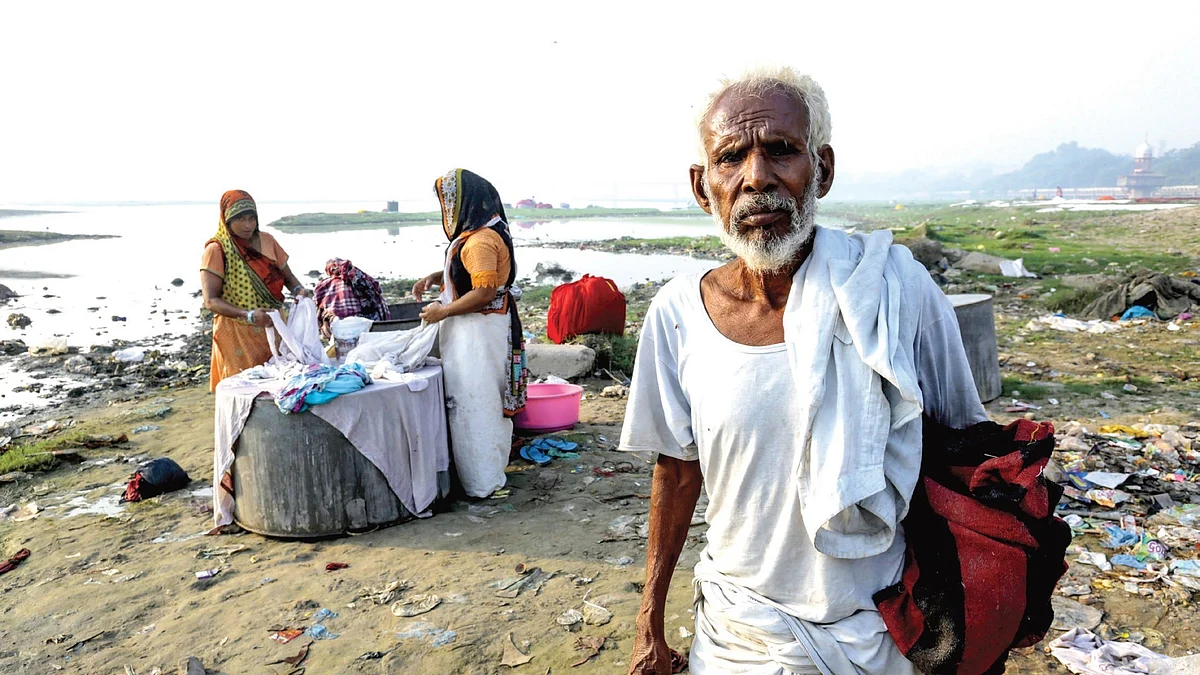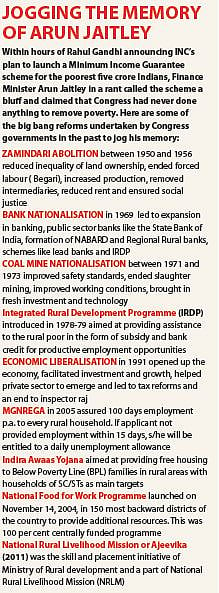NYAY is justice for all: A new deal for the poor
By taking on the challenge of income redistribution head-on, Rahul has re-defined political discourse towards the core issues that define our society. That gives its citizens respect and dignity

On an archetypal TV show this week, where acrimonious verbiage dominated discussions as usual, there was this frequently visible “independent guest” who was asked to comment on Congress President Rahul Gandhi’s just announced landmark NYAY scheme, which Mr Gandhi described as a final assault on poverty. The half-baked WhatsApp doctorate responded predictably, “It is a waste of money. Indians don’t need a dole. They need jobs. It is just an electoral stunt”.
This matched the Bharatiya Janata Party (BJP) spokesperson’s lamentations earlier, albeit delivered with less acerbity. I asked him if he had heard of the death from starvation of a poor family in Delhi (India’s capital city right under the nose of the “maximum government”) comprising three children. Not surprisingly he had not heard of it. Very few have, at least in Billionaire Raj India.
The middle class was craftily misled in 2014 by the BJP with promises of a land of unending riches. Before we understand the broader contours of the path-breaking NYAY scheme, one needs to know why it is a compelling requirement.
As many as 22 per cent of our fellow Indians live below the poverty line (Tendulkar Committee report). But convert that into numbers and it is a staggering 265 million. That is roughly 80 per cent of America’s population or ten times that of Australia.
That’s why every time PM Narendra Modi’s braggadocio about India being the fastest growing large economy of the world reverberated into prime-time television, several choked in despair and for a reason.
India’s artificially manipulated Gross Domestic Product (GDP) was a statistical jugglery, and downright meretricious. Hence, ground reality was sequestered from the Shining India that Bharatiya Janata Party (BJP) positioned for public consumption. That is why the lowest farm income for the beleaguered Kisan in 14 years (despite abundant production) and a record unemployment level of 7.3 per cent, the highest in 45 years. This, at a time when the world was being presented with India’s big competitive advantage, its demographic dividend. Our economic conditions are dismal.

Globalisation, while leading to capital accumulation and GDP growth, has also exacerbated income inequalities all over the world. In India, the situation is alarming. Take a look at this disconcerting picture:
• One per cent of Indians own 60 per cent of its wealth
• India’s billionaires are adding Rs 2200 crore daily to their burgeoning wealth
• The poorest 10 per cent of Indians (an astronomical 13.6 crore people ) have been in debt since 2004
• India is rated poorly on the Human Development Index (130 out of 189) and Global Hunger Index
• India has the largest concentration of malnourished children suffering from stunted growth
• There is a grocery list of abject failures in delivery of public services besides public services being grossly underfunded
The Minimum Income Guarantee (NYAY) announced by Rahul Gandhi will stop the current trend of worsening income disparities and eliminate poverty, a scourge of developing economies.
Those at the bottom of the pyramid (20 per cent approximately living below the poverty line) will get an assured income of Rs 12,000 per month, which will be the defined minimum. Currently, the average household income of the poorest 20 per cent Indians is estimated at half this amount, so the added expenditure will be a “top-up”, or what is called a progressive scheme which will take a household upwards towards the poverty line number of Rs 12,000 which is non-negotiable.
For example, a household that earns Rs 9,000 will get Rs 3,000 more, and another that earns Rs 7,000 will be bridged by an additional Rs 5,000. It is straightforward. On an average therefore, the poorest household will be assured a minimum income of Rs 1,44,000 per year, approximately half of which will be made available by the Government. This is what is called as an outlier moment, India’s game-changing leap forward towards becoming a middle-income country.
UPA had introduced Direct Benefits Transfer (DBT) and Aadhaar with bank accounts linkage to ensure that there will not be any leakages in welfare subsidies disbursement, and thus the targeted beneficiaries will get the full sum without third-party intermediaries.
To the oft-repeated question as to how will the NYAY be funded, a biopsy of budgetary accounts tells us that the entire subsidy can be effectively funded without compromising with fiscal prudence. For instance, there is substantial room for reforms in current subsidy distribution to cut wasteful expenditures, lesser leakages on account of intelligent targeting, prevent vast state resources being hijacked by crony capitalists (rampant under Modi government) and an efficient and a more equitable tax policy and administration.
By taking on the challenge of income redistribution head-on, Rahul Gandhi has re-defined political discourse towards the core issues that define our society. That gives its citizens respect and dignity.
India is not just about the one per cent having strawberries and cream in London but about those who can never make it to Davos. Or even Dalhousie. It is about that man who carried his dead wife on his shoulders for 12 kms because he could not afford the transport expenses. Or, the three little girls aged 8, 4 and 2 years who died in Delhi that the suited-booted man in the TV studio had not even heard of. The three siblings had not eaten for eight days.
Follow us on: Facebook, Twitter, Google News, Instagram
Join our official telegram channel (@nationalherald) and stay updated with the latest headlines
